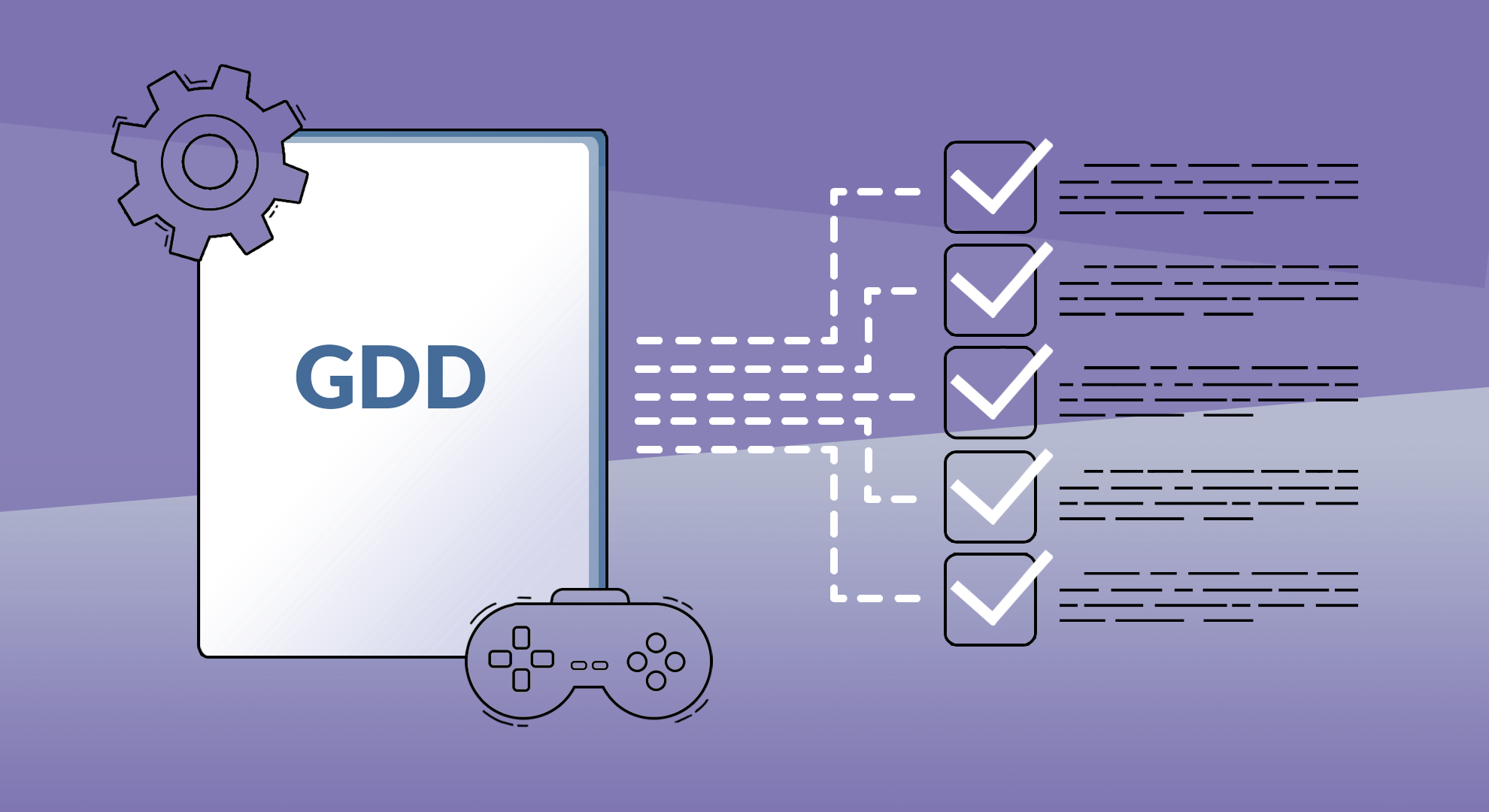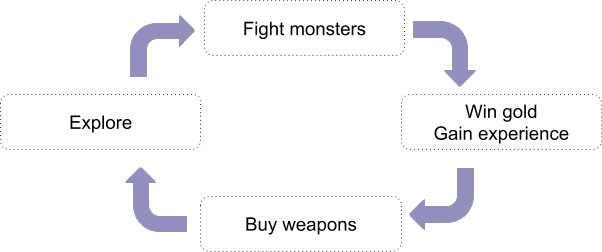
In the previous part of the post, we’ve introduced you to the most important reasons to create a game design document in your project, using three examples: personal project, internal project, and commission work. In this part, we would like to present you with a basic game design document template we’ve created with the use of our experience in different types of internal and outsourced projects.
Basing on the template, we will explain how to create such a document, how to divide the sections and what should be included in it to make it serve its purpose. At the end of the post, you will find a link under which you will be able to download a file, which you can later use during your document creation process.
Game overview
After you are proudly finished with a wonderful title page of the document, it’s time to share the most important information about your game. In our template, the section devoted to this part is called Game overview. Depending on the project you are working on its subsections may vary, but generally, it should include information about: general idea, story (if there is one), genre, targeted platforms, gameplay, controls, visual style, planned features, deadline, glossary etc. It should include the crucial information needed to create a first, overall picture of your game in the reader’s mind. This information should be presented in an engaging, attractive way to catch the reader’s attention and make him or her want to know more details.
First two or three paragraphs that should help the reader to become familiar with your concept and its setting. Remember that if your game is to be based on the good storyline feature and you are looking for team members or a publisher, this couple of sentences may serve as your chance to bring people around to your project. If you don’t plan on including any particular story within your project, you can start the document with an explanation of a general idea.
Core game loop
Core game loop is a base of your game’s mechanics, that will be repeated by the player. It is usually presented in the form of a graph. Here’s an example of a core loop in a very simple game focused on fighting monsters:

Core game loop does not need to consist of one single loop, it can be made of multiple ones that overlap each other. What is worth remembering is that it should represent the actual chain of events happening to the player within the game as well as the fact that when repeated, it should keep the player in the game and keep him or her engaged.
Mechanics
In most cases, Mechanics will be the biggest and most elaborated part of the document. It should include information about such things as game modes, player’s actions and skills, enemies, units, obstacles, environment & types of interactions with them, usable objects, equipment, weapons, maps, character development, experience and difficulty progression, detailed description of controls, statistics, shop, content unlocking, and many others, depending on the type of the game.
Keeping this part of the document nicely and clearly set up will make the future work more fluent and will make it easier to add more and more details on the way. It is good to start with dividing it into main sections, and then proceed to add more and more subsections. Making this part very structured may seem like overkill at the beginning while you design the first features, but later will let you keep everything nice, tidy and comprehensible. Adding a new feature in the middle of the project won’t be terrifying if everything added to the document earlier will be kept in order.
UI and Game screens
UI section is devoted to how the UI should look and work. In the Game screens section you can present the screen flow through which the player will go while in the game, which button leads where and what does it trigger.
Levels
This section should include the list of levels, their names, level designs, descriptions, all necessary details needed to set up the levels. It is also most welcome to add many graphic representations of the levels if they exist.
Assets & animations
Creating a list of needed art and sound assets, as well as animations, keeping them in your game design document along with their to-do/in progress/done status is also a good practice. It allows you to keep all team members on the same track and see clearly how much work is still left to be done.
References
The section devoted to references serves as a nice knot that ties your document together. Combined with the first, introductory section, it helps you provide the complete image of what you would like your game to be. At first, the picture may just exist in your head, but the presentation of your idea accompanied by the references to the creations that are already out there can give a boost of imagination to your team, colleagues, publisher, or anyone who will be presented with your project.
Don’t restrict yourself to referring only to other game titles. The more references, the better. They can belong to various branches of art, too – music, art, photography, movies – basically anything that can enrich the vision you already have, and anything that has a “feel” and “mood” that you would like to transfer into your project.
Summary
We hope that you enjoyed the reading of our posts and learned something new that you will be able to use in your future projects. Sometimes the creation of a game design document may seem like a defeat, especially the big ones. It is important to approach it with a positive attitude.
Remember to start with dividing it into big parts, describe the most important features, and then go into more and more detail about each of them. Grasp the basic idea first and make it coherent to have a nice foundation to elaborate on. Make sure to keep your table of contents in order too, as the bigger your document will grow, the harder it will be to navigate through it without a contents page. Also, do not forget about your documentation as the project will go on, as the outdated document making a round between the team members may cause more harm than good. Make sure to update it as you move forward.
In case of any questions and comments about the post or the template, please don’t hesitate to ask, we’d gladly discuss all of them.
